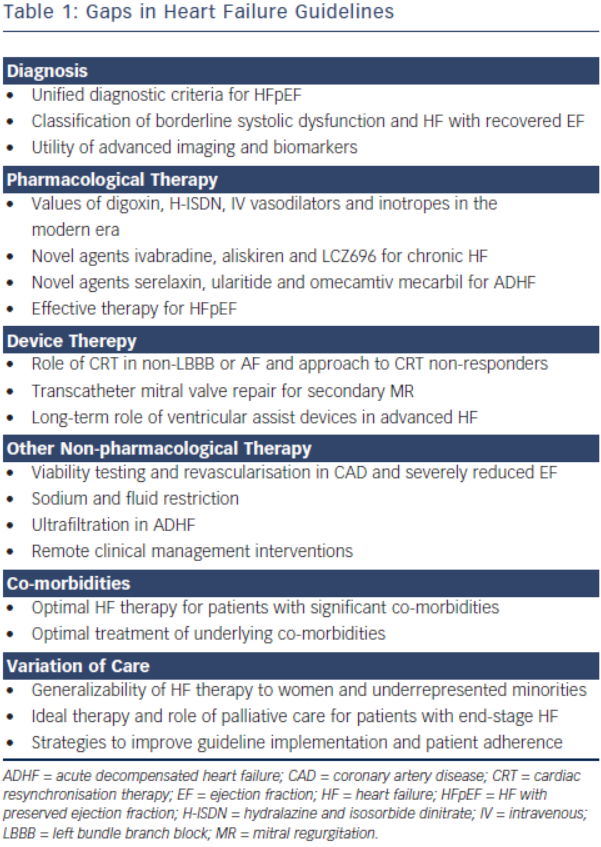Introduction on Gaps in the Heart Failure Guidelines
Heart failure (HF) remains a major public health problem resulting in substantial morbidity, mortality and healthcare expenditures globally. The European Society of Cardiology (ESC) 2012 Guidelines for the Diagnosis and Treatment of Acute and Chronic Heart Failure and the American College of Cardiology Foundation (ACCF)/American Heart Association (AHA) 2013 Guideline for the Management of Heart Failure both provide comprehensive evidence-based recommendations in caring for patients with HF.1,2 Both guidelines use similar predefined scales for strength of recommendation and level of evidence for particular treatment options.
The classes of recommendations range from Class I (where a given treatment is beneficial) to Class III (where a given treatment is not useful and in some cases may be harmful). The levels of evidence (LOE) range from Level A (where data have been derived from multiple randomised clinical trials [RCTs]) to Level C (where recommendations are based on consensus of expert opinions). The ACCF/AHA Guideline also emphasises the concept of optimal treatment, termed guideline-directed medical therapy (GDMT). Although guidelines do not substitute individual clinical judgment, improved adherence to HF guidelines translates to improved clinical outcomes in real world patients. It has been shown that each 10 % improvement in ACCF/AHA HF guideline recommended composite care was associated with a 13 % lower odds of 24-month mortality.3 However, there are still many aspects of HF care for which gaps remain in the evidence base, resulting in gaps in the guidelines.
Only 19.5 % of the ACCF/AHA Guideline recommendations are considered well established by RCTs – 24 Level of Evidence A recommendations compared with 99 Level B or C. Similarly, only 34.4 % of the ESC Guideline recommendations are considered well established – 43 Level A compared with 82 Level B or C. Additionally, there are areas where new evidence has emerged but has not yet been incorporated into the guidelines. We aim to highlight these guideline gaps including areas that warrant further research, areas where data are conflicting and other areas where new data are forthcoming (see Table 1).